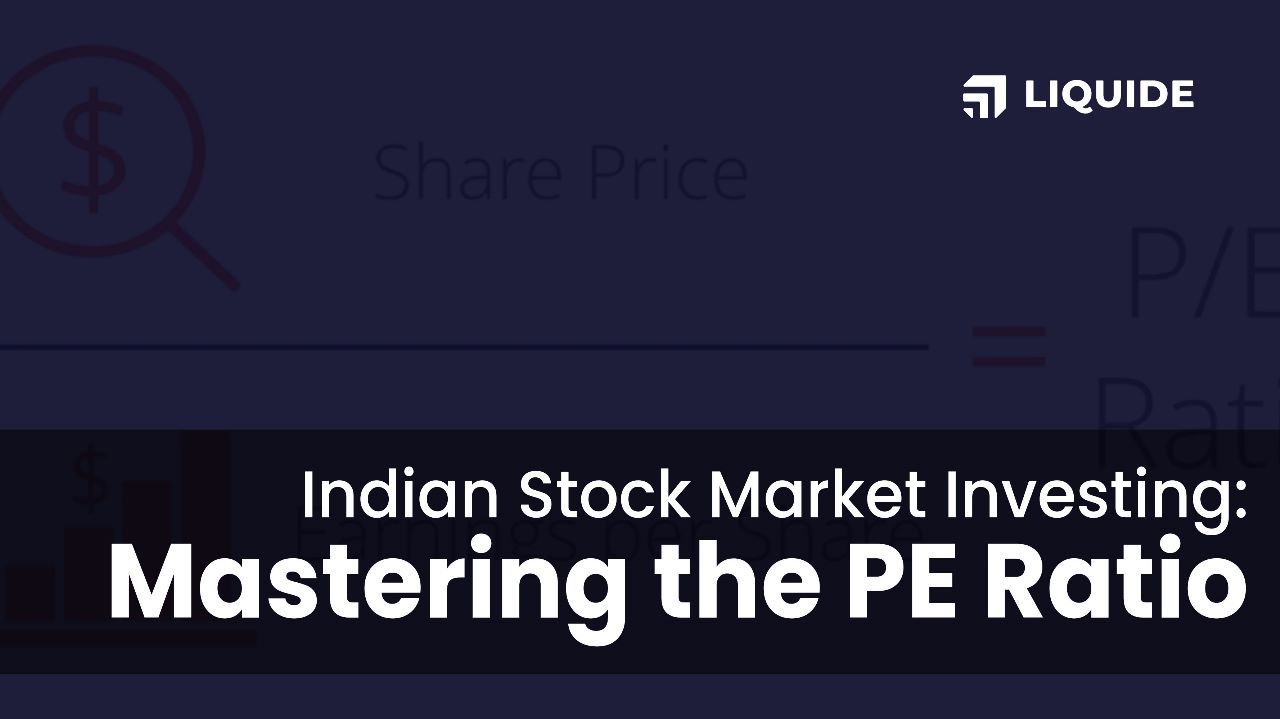The ABCs of PE Ratio: A Must-Know for Indian Stock Market Investors

PE Ratio, or price-to-earnings ratio, is a commonly used financial ratio in the Indian stock market. This blog aims to help beginners understand the basics of the PE Ratio and how it can be used to make informed investment decisions.
What is PE Ratio?
PE ratio is calculated by dividing a company's current market price per share by its earnings per share (EPS). It indicates how much investors are willing to pay for each rupee of earnings generated by a company. For example, if a company's current market price per share is Rs 100 and its EPS is Rs 10, then its PE ratio would be 10 (100/10).
Importance of PE Ratio
PE ratio is crucial because it provides investors with an idea of how much they are paying for a company's earnings. A high PE ratio suggests that investors are willing to pay a premium for a company's earnings. However, it is important to note that a high or low PE ratio alone doesn't provide the full picture. Other factors, such as fundamentals, growth prospects, industry trends and competition, must be taken into account while making investment decisions.
Using PE Ratio
PE ratio can be used in several ways:
- Comparing Companies: Investors may use the PE ratio to compare the valuations of two or more companies in the same industry. A company with a lower PE ratio may be undervalued compared to a company with a higher PE ratio.
- Historical Analysis: Investors may use the PE ratio to analyze a company's historical valuations. If a company's current PE ratio is significantly higher or lower than its historical PE ratio, it may be a sign that the company is overvalued or undervalued.
- Market Analysis: Investors can use the PE ratio to analyze the overall market valuation. If the average PE ratio of the market is higher than the historical average, it may be a sign that the market is overvalued or vice versa.
Limitations of PE Ratio
PE ratio has certain limitations, such as
- Industry Differences: Different industries have different average PE ratios. For example, a technology company may have a higher PE ratio compared to a utility company. Therefore, it is important to compare companies within the same industry while using the PE ratio.
- Earnings Manipulation: Sometimes, companies can manipulate their earnings to make their PE ratio look attractive. Therefore, it is important to look at other financial ratios and indicators to verify a company's financial health.
- Cyclical Industries: Companies in industries which are cyclic like construction and real estate may have fluctuating earnings, which can make their PE ratio unreliable.
Conclusion
PE ratio is a valuable tool for investors to assess a company's valuation. However, it should not be used in isolation while making investment decisions. Investors should also consider other financial ratios and factors such as growth prospects, industry trends and competition.
At Liquide, we offer expert advice on stock market trading, providing users with real-time analysis and recommendations from financial professionals. Our app enables investors to manage their portfolios, track market trends and receive personalized investment advice based on their financial objectives and risk tolerance. The Liquide app is available on the Google Play Store and Apple App Store for Android and iOS devices.

